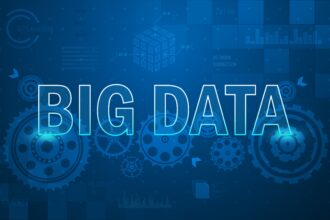Apache Spark is great for processing large amounts of data over large clusters, but wouldn’t it be great if you could process data in near real time? You can with Spark Streaming.
Apache Spark is great for processing large amounts of data over large clusters, but wouldn’t it be great if you could process data in near real time? You can with Spark Streaming.
What Is Spark Streaming?
 Spark Streaming is a special SparkContext that you can use for processing data quickly in near-time. It’s similar to the standard SparkContext, which is geared toward batch operations. Spark Streaming uses a little trick to create small batch windows (micro batches) that offer all of the advantages of Spark: safe, fast data handling and lazy evaluation combined with real-time processing. It’s a combination of both batch and interactive processing.
Spark Streaming is a special SparkContext that you can use for processing data quickly in near-time. It’s similar to the standard SparkContext, which is geared toward batch operations. Spark Streaming uses a little trick to create small batch windows (micro batches) that offer all of the advantages of Spark: safe, fast data handling and lazy evaluation combined with real-time processing. It’s a combination of both batch and interactive processing.
You can adjust the window for processing latency down to half a second, but this is more memory intensive. Spark Streaming is used for everything ranging from credit card fraud detection to the identification of threats on the Internet.
What kinds of data can you analyze?
You might be wondering what kind of data you can ingest into Apache Spark. The short answer is pretty much everything.
More specifically, you can import data from Twitter, Flume, Kafka, ZeroMQ, a custom feed, and HDFS. You can also export into HDFS, as well as other databases, applications, and dashboards.
DStream and RDDs
How is all this possible? It all comes down to the primary data type of Spark: the RDD, or Resilient Distributed Dataset. An RDD is an abstraction of the data that’s held in memory, which is a lot faster than storing and fetching things from disk. This already gives you a significant speed boost over other systems.
RDDs are also safer to use because the transformations keep the original data in lineages, returning new RDDs with the transformations applied. This allows Spark to reconstruct the data with all the changes should something go wrong with one of the nodes in the cluster, such as a power failure.
DStream takes the concept of RDDs and applies it to streams. A DStream is simply a stream of RDDs, giving all of the advantages of speed and safety in near real time. The DStream API offers a limited set of transformations compared to the standard Apache Spark.
Spark Streaming Transformations
If you’re wondering what kind of transformations you can do on DStreams, they’re pretty similar to the standard Spark transformations.
We’ll borrow some examples from the Apache Spark Reference Card to give you a taste. Let’s pretend we’re reading data over some kind of stream, such as from a social media feed.
Let’s start our Spark Streaming Context:
val ssc = new StreamingContext(sc, Seconds(1))
val lines = ssc.socketTextStream(“localhost”, 9999)
For example, map(func) takes func as an argument and applies it to each element, returning a new RDD.
Here’s an example multiplying each line by 10:
lines.map(x=>x.toInt*10).print()
We’ll send some data with the Netcat or nc program available on most Unix-like systems. Spark is reading from port 9999, so we’ll have to make sure Netcat points there.
prompt> nc –lk 9999
12
34
Here’s what the output looks like:
120
340
flatmap() is similar, but can return 0 or more items.
This example splits text, putting each word on separate lines:
lines.flatMap(_.split(” “)).print()
Let’s try it with the string “Spark is fun”:
prompt> nc –lk 9999
Spark is fun
And here’s the output:
Spark
is
fun
count() is obvious enough. It counts the number of data elements.
We can count the lines in our stream:
lines.flatMap(_.split(” “)).count()
And here are some lines:
prompt> nc –lk 9999
say
hello
to
spark
The output should be 4.
reduce() is similar, but applies a function as an argument to the data elements instead of just adding them.
We can use this to add up all the numbers:
lines.map(x=>x.toInt).reduce(_+_).print()
And let’s get some numbers into Spark Streaming:
prompt> nc –lk 9999
1
3
5
7
The answer should be 16.
countByValue() counts the number of occurrences of each data set.
We can use this to count the number of times each word occurs:
lines.countByValue().print()
We’ll include some duplicate lines just to show you how it works:
prompt>nc –lk 9999
spark
spark
is
fun
fun
The output will look like this:
(is,1)
(spark,2)
(fun,2)
An alternate way we could do this is by using the reduceByKey() function:
val words = lines.flatMap(_.split(” “))
val wordCounts = words.map(x => (x, 1)).reduceByKey(_+_)
wordCounts.print()
Conclusion
By now, you have seen the power of Spark Streaming and what it can do for your near-real-time big data needs. If you want to experiment, you can download a private Sandbox, a full virtual machine with Apache Spark that you can play around with.








